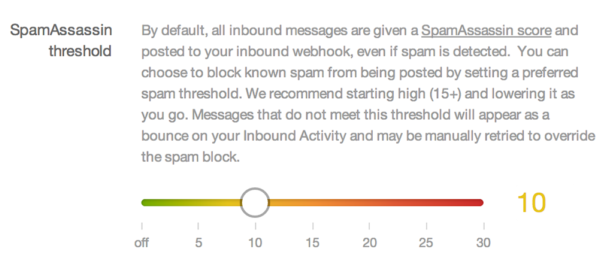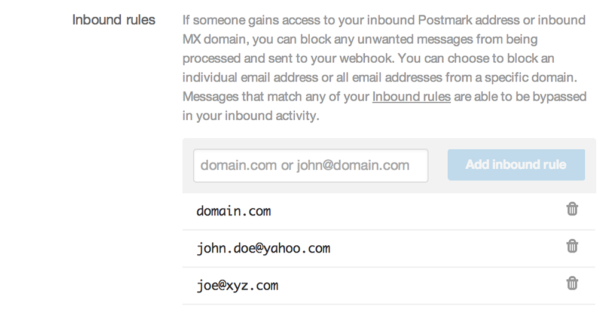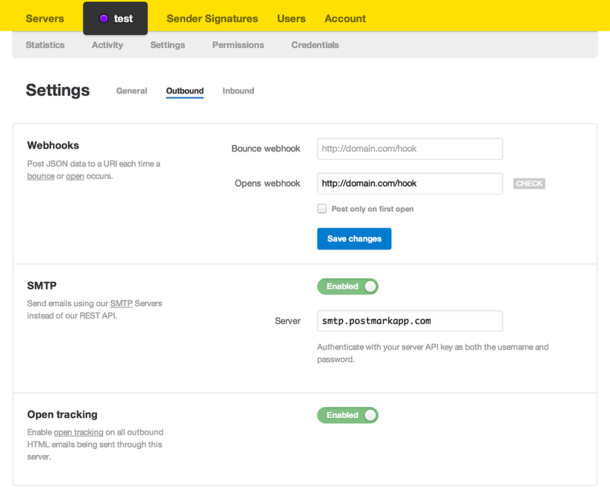Inbound Improvements and Settings Redesign
Since adding Inbound parsing to Postmark over two years ago, we‘ve processed millions of messages for our customers. We‘ve been adding more and more features to inbound over time as well, such as MX Domain Forwarding, retries, and StrippedTextReply. Today we‘re announcing the next set of Inbound features, along with a completely redesigned Server Settings page.
Inbound Spam Threshold #
When messages are sent to a user‘s Postmark Inbound email address, they‘re scanned using SpamAssassin and assigned a score which is added as a X-Spam-Score header to the message. The header can then be examined at a user‘s webhook endpoint and if the score is high, it can be discarded. Up until now, however, this process was incumbent on the user to setup and maintain. Beginning today, Postmark offers an Inbound Spam Threshold setting which will be applied to all messages that pass through the server it is set for. The spam threshold can be set under the Server Settings > inbound section or through the new Inbound Rules API.

If the spam score of the message message exceeds the threshold that is set for the server, the message will be blocked and not passed on to the user‘s webhook. The message will appear in your inbound activity and is still searchable via the usual API endpoints, but it will not be processed.
Since spam scoring is tricky business, false positives can occasionally happen. In this case, you may use the “Bypass” button to process the message despite any of the rules in place to block it.

Setting the Inbound Spam Threshold is, of course, also available in the API as well as bypassing blocked messages.
Inbound Rules Triggers #
A short time ago we announced the Triggers API which allows you to add actions to certain events as they happen. Today we announce our second set of triggers, Inbound Rules.
Inbound Rules are meant to offer you even more control over inbound processing. You can add either an email address or a domain to a list of rules that will be consulted for each inbound message. If the sender of an inbound message matches one of the rules, the message will be blocked in the same way the Spam Threshold blocking works. Likewise, these rules can also be bypassed in the front-end or by way of the API. Adding an Inbound Rule trigger is easy and can be done through the API or in the web app under the inbound server settings.

Server Settings Redesign #
With the addition of these new inbound features we decided it was time to redesign our server settings.

We’ve organized our server settings into three different categories:
- General — Your server name, color label, and the option to delete your server can be found here.
- Outbound — Your outbound related webhooks, open tracking, and SMTP settings can be found here.
- Inbound — Your inbound webhook, inbound domain, and inbound spam filtering settings can be found here.
Anything else you would like to see added or improved? Let us know!


